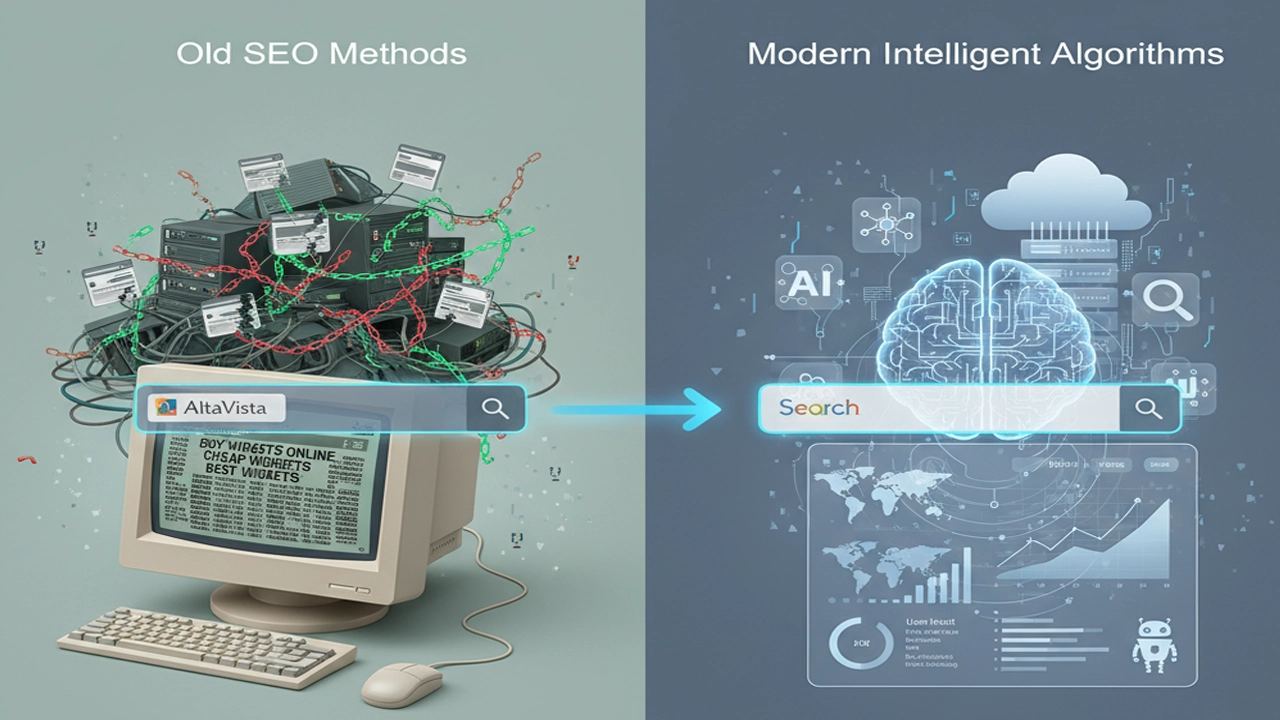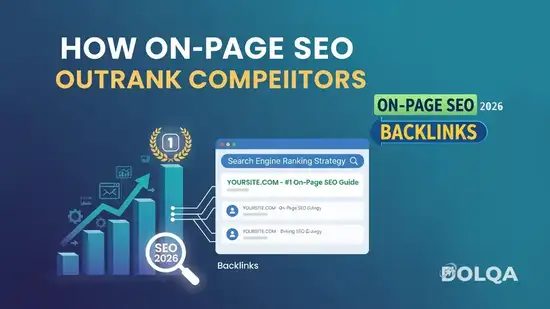Introduction
you need content that performs. Search engine optimization (SEO) has evolved from simple keyword stuffing into a sophisticated discipline that requires strategic thinking, technical expertise, and a deep understanding of user intent. The difference between content that languishes on page ten and content that dominates the first page of Google results lies in how well you implement proven SEO strategies.
This comprehensive guide will walk you through the essential techniques and methodologies for developing powerful content that not only ranks well but also engages your audience and drives meaningful results. Whether you're a content creator, digital marketer, or business owner, these strategies will help you navigate the complex world of search engine optimization and establish a commanding presence in Google's search results.

Understanding Modern Search Engine Optimization
The Evolution of SEO
Search engine optimization has undergone dramatic transformation since Google's inception. Early SEO tactics focused primarily on keyword density and backlink quantity, but modern algorithms have become remarkably sophisticated. Today's search engines use machine learning, natural language processing, and hundreds of ranking factors to determine which content deserves top positions.
have fundamentally changed how content is evaluated. These updates prioritize:
- Content quality and relevance over keyword manipulation
- User experience signals including page speed and mobile responsiveness
- Topical authority and expertise demonstrated through comprehensive coverage
- Semantic search understanding that goes beyond exact keyword matches
- User intent satisfaction measured through engagement metrics
How Search Engines Rank Content
Understanding the ranking mechanism helps you develop powerful content that aligns with search engine expectations. Google's algorithm evaluates content through multiple lenses:
- Crawlability and Indexability: Can search engines access and understand your content?
- Relevance: Does your content match the searcher's query and intent?
- Authority: Do other reputable sites link to and reference your content?
- User Experience: Does your page load quickly and provide a positive experience?
- Freshness: Is your content current and regularly updated?
Core Principles for Developing Powerful Content
Comprehensive Keyword Research and Strategy
Effective SEO begins with thorough keyword research. This foundational step determines what topics you'll cover and how you'll structure your content.
Strategic Keyword Selection Process:
- Primary keywords: High-volume terms directly related to your core topic
- Long-tail keywords: Specific phrases with lower competition but higher conversion potential
- LSI keywords (Latent Semantic Indexing): Related terms that provide context and depth
- Question-based queries: Phrases people actually type into search engines
- Competitor keywords: Terms your competitors rank for that you're missing
Use professional keyword research tools like Google Keyword Planner, Ahrefs, SEMrush, or Moz to identify opportunities. Look for keywords with:
- Reasonable search volume (varies by industry and niche)
- Manageable competition level for your domain authority
- Strong commercial or informational intent matching your goals
- Trending interest or stable long-term search patterns
Understanding and Matching Search Intent
has become the cornerstone of modern SEO. Google's algorithm increasingly prioritizes content that perfectly matches what users are looking for.
Four Primary Types of Search Intent:
Informational Intent: Users seeking knowledge or answers
- Example: "What is search engine optimization"
- Content type: Comprehensive guides, tutorials, explainers
Navigational Intent: Users looking for a specific website or page
- Example: "Google Analytics login"
- Content type: Homepage, branded pages
Transactional Intent: Users ready to make a purchase or take action
- Example: "Buy SEO audit tool"
- Content type: Product pages, service descriptions
Commercial Investigation: Users researching before making a decision
- Example: "Best SEO tools comparison"
- Content type: Reviews, comparisons, case studies
Analyze the top-ranking pages for your target keywords to understand what type of content Google deems most relevant. Match your content format and structure to these expectations.
Technical SEO Foundations for Content Success
On-Page Optimization Techniques
On-page SEO encompasses all elements within your content that you can directly control and optimize.
Essential On-Page Elements:
Title Tags: Include primary keywords within the first 60 characters. Make them compelling and click-worthy while accurately describing content.
Meta Descriptions: Craft persuasive summaries under 160 characters that encourage clicks from search results.
Header Tags (H1, H2, H3): Structure content hierarchically using headers that incorporate keywords naturally and improve scannability.
URL Structure: Create clean, descriptive URLs that include target keywords and avoid unnecessary parameters.
Internal Linking: Connect related content pieces to distribute page authority and help search engines understand site architecture.
Image Optimization: Use descriptive file names, alt text, and compressed file sizes to improve load times and accessibility.
Schema Markup: Implement structured data to help search engines understand content context and enable rich snippets.
Content Structure and Formatting
How you present information significantly impacts both user engagement and search engine understanding.
Best Practices for Content Structure:
- Begin with a compelling introduction that immediately addresses the topic
- Use short paragraphs (2-4 sentences) for improved readability
- Incorporate bullet points and numbered lists to break up text
- Include relevant images, videos, or infographics every 300-500 words
- Use bold and italic formatting sparingly to emphasize key points
- Create a logical flow that guides readers through complex topics
- Add a table of contents for longer articles (over 2,000 words)
Mobile Optimization and Page Speed
With mobile-first indexing, Google primarily uses the mobile version of content for ranking. Mobile optimization is no longer optional—it's essential.
Mobile Optimization Checklist:
- Implement responsive design that adapts to all screen sizes
- Ensure touch elements are properly sized and spaced
- Use legible font sizes (minimum 16px for body text)
- Avoid intrusive interstitials that block content access
- Test functionality across multiple devices and browsers
Page Speed Optimization:
- Compress and optimize images (WebP format recommended)
- Minimize CSS, JavaScript, and HTML
- Enable browser caching
- Use a Content Delivery Network (CDN)
- Implement lazy loading for images and videos
- Reduce server response time
- Eliminate render-blocking resources

Creating Content That Dominates Rankings
The E-E-A-T Framework
Google's Quality Rater Guidelines emphasize E-E-A-T: Experience, Expertise, Authoritativeness, and Trustworthiness. This framework should guide your content creation process.
Demonstrating E-E-A-T:
- Experience: Share first-hand experiences, case studies, and practical examples
- Expertise: Showcase credentials, qualifications, and deep topic knowledge
- Authoritativeness: Build recognition as a go-to source in your niche
- Trustworthiness: Provide accurate information, cite sources, and maintain transparency
Include author bios with credentials, link to authoritative sources, and regularly update content to maintain accuracy.
Comprehensive Topic Coverage
Superficial content rarely ranks well. Search engines favor comprehensive resources that thoroughly address a topic from multiple angles.
Strategies for Comprehensive Coverage:
- Research competing top-ranking content to identify coverage gaps
- Address related subtopics and common questions within your main article
- Include diverse perspectives and use cases
- Provide actionable advice and specific examples
- Use data, statistics, and research to support claims
- Create content that exceeds the depth of current ranking pages
Content Length and Depth
While there's no magic word count for SEO success, in-depth content typically performs better for competitive keywords. Studies consistently show that longer, comprehensive content tends to rank higher.
Content Length Guidelines:
- Blog posts targeting competitive keywords: 1,500-3,000+ words
- Pillar content and ultimate guides: 3,000-5,000+ words
- Product pages: 300-500 words minimum with unique descriptions
- News articles: 300-600 words
- Local business pages: 500-750 words
Quality always trumps quantity. Every word should serve a purpose and provide value to readers.
Originality and Value Proposition
Duplicate or thin content gets penalized or ignored, and to understand how to avoid Google penalties and their mechanisms, your content must offer unique value that cannot be found elsewhere.
Creating Unique Value:
- Present original research, data, or insights
- Offer a unique perspective or methodology
- Create better explanations than existing resources
- Provide exclusive tools, templates, or downloadable resources
- Include expert interviews or original quotes
- Update and improve existing content with fresh information
Advanced Content Optimization Strategies
Semantic SEO and Topic Clusters
Modern SEO goes beyond individual keywords to understand topics holistically. Semantic SEO focuses on content meaning and context.
Implementing Topic Clusters:
- Create a comprehensive pillar page covering a broad topic
- Develop cluster content addressing specific subtopics
- Link cluster pages to the pillar page and vice versa
- Use consistent terminology and related keywords throughout
- Build topical authority by covering all aspects of a subject domain
This structure helps search engines understand your expertise and improves rankings across related queries.
User Engagement Signals
Google monitors how users interact with your content, using engagement metrics as ranking signals.
Key Engagement Metrics:
- Click-Through Rate (CTR): Percentage of users who click your result
- Dwell Time: How long users spend on your page
- Bounce Rate: Percentage who leave without interaction
- Pages Per Session: How many pages users visit
- Returning Visitors: Users who come back to your site
Improving Engagement:
- Write compelling title tags and meta descriptions that earn clicks
- Deliver on promises made in search results
- Hook readers immediately with strong introductions
- Use multimedia elements to maintain interest
- Include internal links to related content
- Add interactive elements like calculators or quizzes
- Ensure fast loading times to reduce abandonment
Content Freshness and Updates
Google's algorithm favors fresh, regularly updated content, especially for queries where recency matters.
Content Maintenance Strategy:
- Review and update content quarterly or biannually
- Add new sections covering recent developments
- Remove outdated information and broken links
- Update statistics, examples, and case studies
- Refresh meta descriptions and title tags
- Add new internal links from recent content
- Improve formatting and readability based on performance data
Mark significant updates with publication dates to signal freshness to both users and search engines.
Link Building for Content Authority
The Importance of Backlinks
Backlinks remain one of the strongest ranking signals. Quality links from authoritative sites signal that your content is trustworthy and valuable.
Link Quality Factors:
- Domain authority of the linking site
- Relevance of the linking page to your content
- Position and context of the link within content
- Anchor text used (natural, varied, and relevant)
- Do-follow vs. no-follow status
- Traffic potential from the linking page
Earning Natural Backlinks
The most sustainable link building strategy involves creating content so valuable that others naturally want to reference it.
Link-Worthy Content Types:
- Original research and data studies
- Comprehensive guides and resources
- Interactive tools and calculators
- Industry reports and surveys
- Infographics and visual content
- Expert roundups and interviews
- Controversial or thought-provoking opinions
Proactive Link Building Tactics
While focusing on quality content, you can accelerate link acquisition through strategic outreach.
Ethical Link Building Methods:
- Guest posting on relevant, authoritative sites
- Digital PR and journalist outreach with newsworthy angles
- Resource page link building (suggesting your content as a resource)
- Broken link building (replacing dead links with your content)
- Competitor backlink analysis and replication
- Creating linkable assets and promoting them
- Building relationships with industry influencers
Avoid black-hat tactics like buying links, participating in link schemes, or using automated link building tools that violate Google's guidelines.
Measuring and Improving Content Performance
Essential SEO Metrics to Track
You can't improve what you don't measure. Implement comprehensive tracking to understand content performance.
Key Performance Indicators:
- Organic Traffic: Sessions from search engines
- Keyword Rankings: Position in search results for target terms
- Impressions: How often your content appears in search results
- Click-Through Rate: Impressions that result in clicks
- Conversion Rate: Visitors who complete desired actions
- Backlink Profile: Quantity and quality of inbound links
- Domain Authority: Overall site strength and trustworthiness
- Page Speed: Loading time across devices
Analytics Tools and Platforms
Professional SEO requires proper tools for research, analysis, and monitoring.
Essential SEO Tools:
- Google Search Console: Free tool showing search performance and technical issues
- Google Analytics: Traffic analysis and user behavior tracking
- Ahrefs/SEMrush/Moz: Comprehensive SEO suites for research and tracking
- PageSpeed Insights: Performance analysis and optimization recommendations
- Screaming Frog: Technical SEO auditing tool
- Google Keyword Planner: Keyword research and search volume data
Iterative Improvement Process
SEO is not a one-time effort but an ongoing process of testing, measuring, and refining.
Continuous Optimization Workflow:
- Analyze current performance data and identify underperforming content
- Research what top-ranking competitors are doing differently
- Hypothesize improvements based on SEO best practices
- Implement changes methodically
- Monitor impact over 4-8 weeks
- Document results and insights
- Scale successful tactics across other content
This data-driven approach ensures continuous improvement and adaptation to algorithm changes.
Common SEO Mistakes to Avoid
Technical Pitfalls
- Keyword stuffing: Overusing keywords unnaturally damages readability and rankings
- Duplicate content: Multiple pages with identical or very similar content
- Thin content: Pages with insufficient value or minimal information
- Poor site structure: Confusing navigation and illogical hierarchy
- Missing or poor meta tags: Neglecting title tags and meta descriptions
- Broken links: Dead internal and external links damage user experience
- Slow loading speeds: High bounce rates from poor performance
Content Strategy Errors
- Ignoring search intent: Creating content that doesn't match what users want
- Neglecting mobile users: Failing to optimize for mobile-first indexing
- Focusing only on rankings: Ignoring conversions and business goals
- Creating content in isolation: Not building topical authority systematically
- Neglecting content promotion: Expecting organic traffic without any initial push
- Forgetting about updates: Allowing content to become outdated and irrelevant

Future-Proofing Your SEO Strategy
Adapting to Algorithm Updates
Google releases thousands of algorithm updates annually. While you can't predict every change, you can build resilience.
Future-Proof Principles:
- Prioritize user experience above all else
- Focus on creating genuinely helpful, high-quality content
- Build a diverse traffic portfolio beyond just search
- Stay informed about SEO trends and confirmed updates
- Maintain white-hat practices that align with Google's guidelines
- Invest in technical foundations and site health
Emerging SEO Trends
Stay ahead by understanding where search is heading.
Key Trends to Watch:
- Voice search optimization: Conversational queries and featured snippets
- AI and machine learning: More sophisticated content understanding
- Visual search: Optimization for image and video search
- Zero-click searches: Providing information directly in search results
- Core Web Vitals: Increased importance of technical performance metrics
- User experience signals: Growing weight of engagement metrics
Conclusion
Mastering search engine optimization and developing powerful content that dominates Google results requires a multifaceted approach combining technical expertise, strategic thinking, and commitment to quality. The strategies outlined in this guide provide a roadmap for creating content that not only ranks well but also delivers genuine value to your audience.
Remember that SEO success doesn't happen overnight. It requires consistent effort, continuous learning, and patience as search engines evaluate and reward your content. Focus on building a solid foundation with proper technical optimization, create comprehensive content that thoroughly addresses user needs, and build authority through quality backlinks and consistent publishing.
The digital landscape will continue evolving, but the core principle remains constant: content that genuinely helps users will always have a place at the top of search results. Start implementing these strategies today, measure your results, and continuously refine your approach based on performance data.
What's your biggest challenge with SEO and content development? Share your experiences in the comments below, and let's continue the conversation about creating content that truly dominates search results.
Sources and References
- Google Search Central Documentation - "SEO Starter Guide" - developers.google.com/searc
- Moz - "The Beginner's Guide to SEO" - moz.com/beginners-guide-to-seo
- Search Engine Journal - "Google Ranking Factors" - searchenginejournal.com
- Ahrefs Blog - "Content Marketing and SEO Best Practices" - ahrefs.com/blog
- Backlinko - "SEO Strategy and Link Building Techniques" - backlinko.com
- Google Search Quality Evaluator Guidelines - "E-E-A-T Guidelines" - guidelines.raterhub.com
- SEMrush Blog - "Technical SEO and Content Optimization" - semrush.com/blog
- HubSpot - "Content Strategy and Inbound Marketing" - blog.hubspot.com
- Neil Patel - "Advanced SEO Tactics and Strategies" - neilpatel.com/blog
- Search Engine Land - "Search Engine News and Algorithm Updates" - searchengineland.com




Comments (0)
Leave a Comment
No comments yet. Be the first to comment!